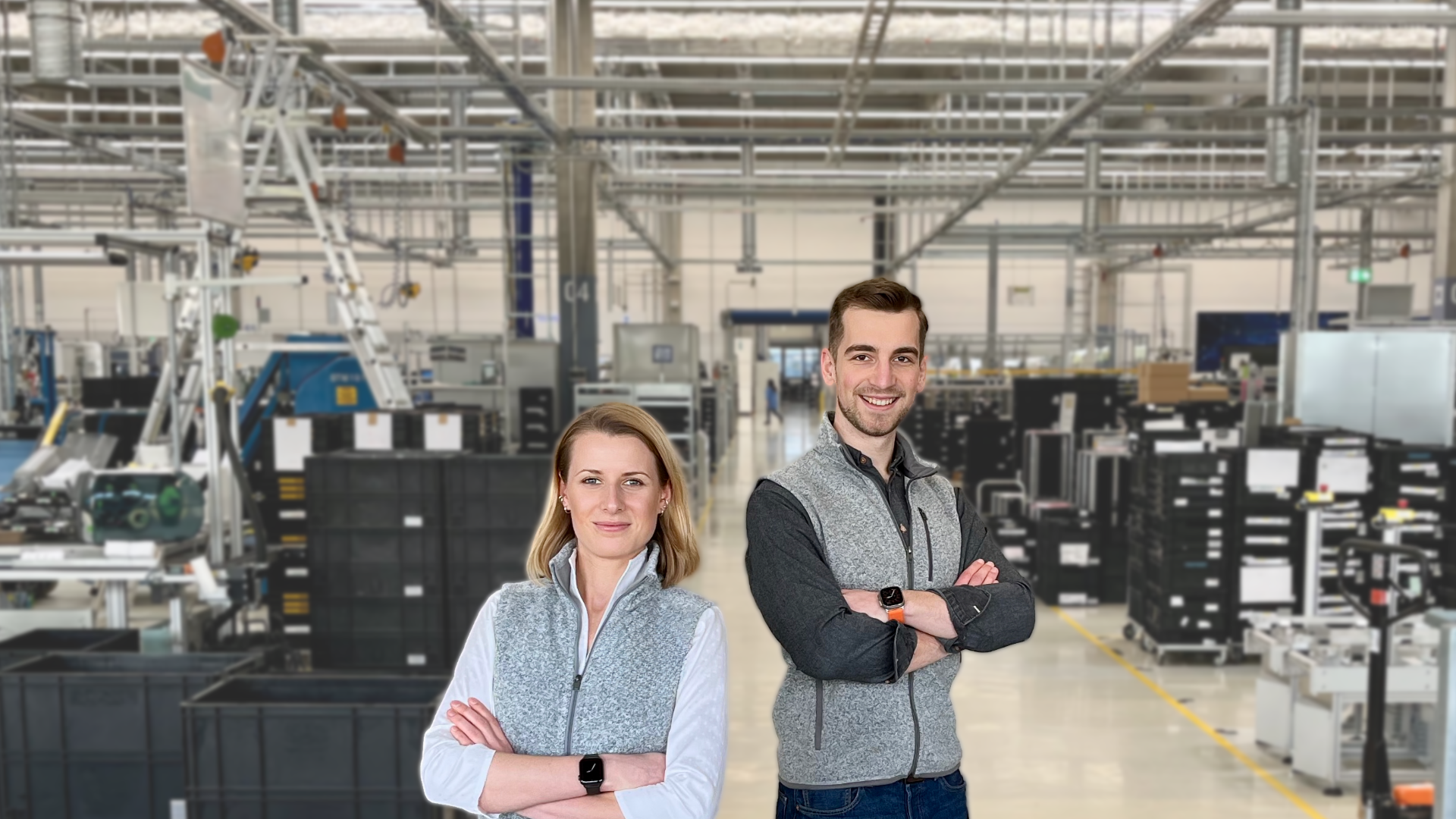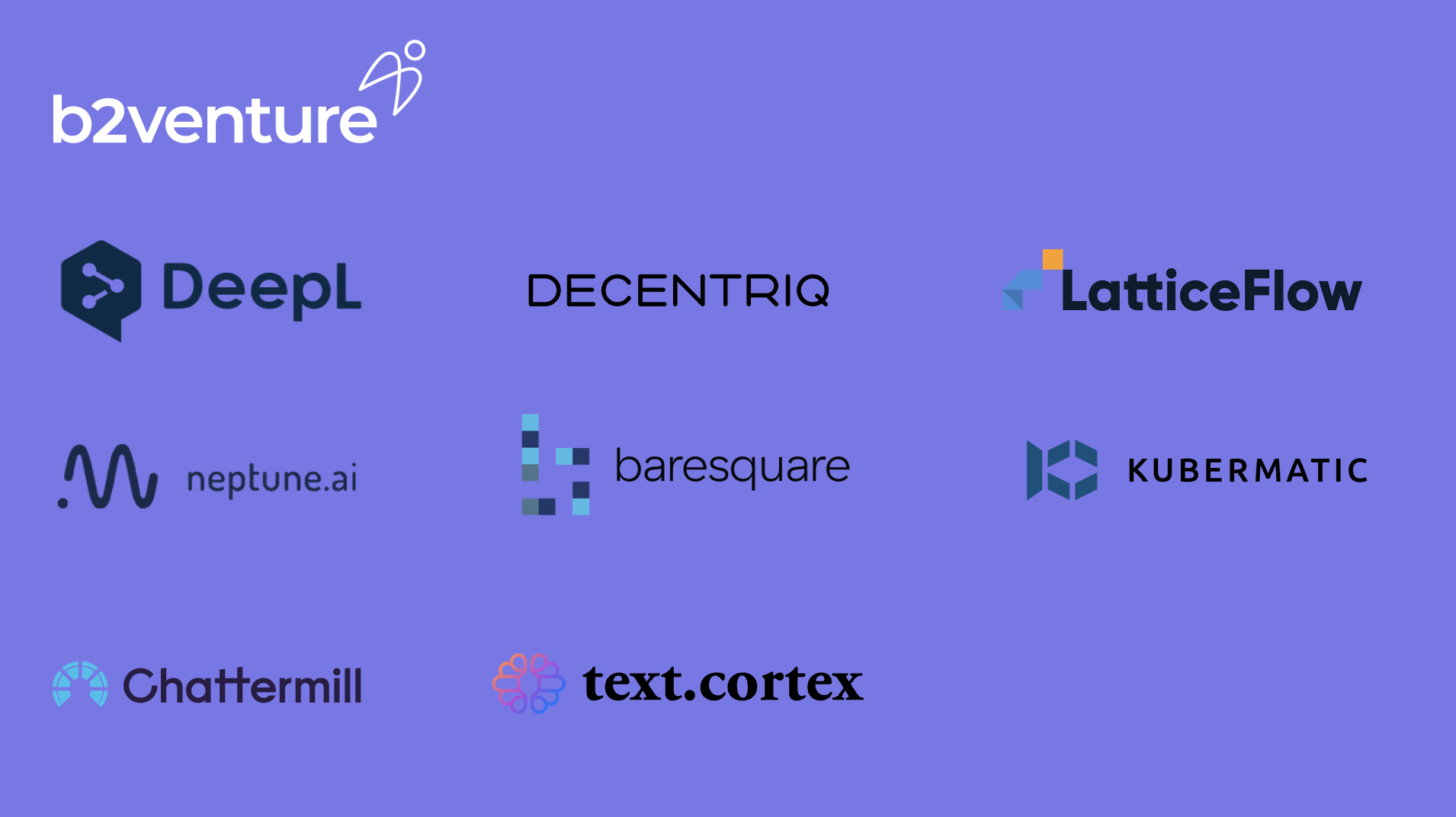Back to School | Opportunities for EdTech Startups in Generative AI and K-12 Education
Back to School | Opportunities for EdTech Startups in Generative AI and K-12 Education

Generative AI is already changing how educators and students interact. As researchers at MIT noted in a paper earlier this year, the “widespread availability of generative AI has been a jolt” for educators ”scrambling to adapt”. Generative AI has spread like wildfire among students with access to smartphones, and its adoption has not been dependent on the introduction of educational policies (think tablets or digital whiteboards in the classroom). Rather, it has landed organically at the smartphone install base. A recent study suggests that about half of teachers and K-12 students are already using AI chatbots at least once per week.
The speed at which Generative AI is being adopted means educators in K-12 will need to act fast to manage this technology and harness its promise for better student outcomes. Generative AI’s rapid adoption also presents outsized opportunities for startups to build solutions that can provide immediate and superior improvements to mainstream LLMs such as Chat GPT.
Most educators are well-versed in the waves of tech hype cycles that have crashed over K-12 education in the last twenty years. Yet, despite these advancements, improving the quality of education at scale has remained elusive.
We have identified some of the main factors holding back progress in K-12 education:
Lack of digital infrastructure: The COVID-19 pandemic has spurred some progress, yet many schools still lack a robust digital infrastructure (including broadband internet access and WiFi) needed for new tools and services.
Teacher shortage: Almost all European countries face severe teacher shortages. Germany, for instance, is projected to have a shortfall of up to 177,500 teachers by 2035, primarily due to an aging population and the declining attractiveness of the teaching profession.
Quality of Education: Teacher shortages translate into a series of further challenges mainly linked to the quality of school lessons; e.g. lesson cancellations (students missing out on parts of the subject matter that the curriculum actually requires), lack of lesson preparation due to a high workload; and a doom loop in which the attractiveness of teaching positions continues to decline as increasing pressure and higher workloads reinforce the negative image of the profession. This concern is reflected in Germany’s most recent PISA scores, which are the worst for the country on record.
One-Size-Fits-All Approach: The current education system is rigid, outdated, and not focused on student achievement. Most standardized curricula and instructional practices date back to the last century and fail to cater to individual learning preferences and needs.
Transformative Potential for Both Educators and Students
Generative AI’s transformative potential applies to both educators and students. Students would be free to develop their creativity and higher-order thinking, supported by AI, with a deliberate balance of new and traditional classroom practices, while teachers would be freed from mundane and repetitive tasks to focus on personal interactions and engaging with students. In view of this, we see various application areas where AI-powered solutions dedicated to the education sector could add substantial value.
- Adaptive curriculum and personalized learning paths: AI models can pinpoint where a student struggles and adapt the curriculum to focus on those areas. This allows students to learn at their own pace, which is something a single teacher in a large classroom cannot achieve.
- In-depth, personalized testing: While standardized tests are the norm, AI could introduce more personalized testing methods. Imagine students defending their essays against AI models, providing a more nuanced evaluation (see Salman in his book Brave New Words: How AI Will Revolutionise Education).
- AI teaching assistants to minimize the administrative burden of teachers: teachers spend too much time per week on repetitive tasks such as lesson planning and grading. Reducing this would allow teachers to allocate more time to other initiatives, such as providing one-on-one attention to students, teaching vocational or entrepreneurial skills, or exploring topics beyond the standard curriculum.
- Increased transparency between teachers, students, and parents: digital learning platforms that track a student’s learning journey would also help parents understand what is happening at school and understand more clearly what their child is good at and where they may need support.
When looking at the current market of AI-powered learning solutions, we have grouped startups from both a student and a teacher perspective, as well as along a holistic end-to-end platform view:

We see two overarching trends in this market overview: 1. mature companies such as Quizlet, Khan Academy (khanmigo) and Brainly adding AI features on top of their existing offering; 2. new, “AI-native” companies entering the market such as Turin-based Algor, which is building an AI-powered concept map maker that translates any content into easily understandable concept maps or Rocket Tutor from Munich, which is helping A-level students to master their math exit exams through a personalized AI tutor. In terms of GTM, startups generally take an approach either focused on catering to educators or students, with very few targeting both.
With these possibilities in mind, we believe the market is maturing very quickly for AI-powered learning platforms with novel approaches that go beyond the capabilities of foundational LLM models. The timing is right for new entrants that can effectively build new products and services at the tooling layer, as my colleague Marisa Krummrich laid out in a previous post.
Our investment hypothesis revolves around several key insights:
- 360-degree approach: To offer a truly personalized and proactive learning experience, it's essential to collect data from both school (in-school learning, exams) and after-school activities (homework, tutoring). Solutions that combine a B2C product targeting students with a classroom platform for teachers can build a comprehensive view of each student’s progress and thus are in the best position to offer a truly personalized learning experience.
- Measurable learning effects: In light of the increased number of learning platforms and solutions, measurable effects will be crucial to establish trust and a differentiated value proposition. Here we see renowned educational institutions, such as leading universities, as key partners for the implementation of such studies. The credibility and reputation of these institutions can lend new solutions to greater trustworthiness, alleviating concerns parents and teachers may have about new technologies.
- Quick painkiller: The average student is not interested in extracurricular activities. Their main goal is to prepare effectively for exams and complete homework with greater speed. Therefore, we consider solutions that are tailored to the core subjects to be the most promising. In addition, the solutions must have an attractive hook to draw students into their solution, provide a quick ROI, and then offer long-term value to retain them.
- Proactive teaching strategies: Tools such as ChatGPT and other language language models (LLMs) have dramatically expanded access to new information and created a new way of synthesizing this information, offering students immediate and precise answers to their inquiries. While this development is noteworthy, it represents a reactive approach to learning—these tools’ output are only as good as the prompts posed by students and can produce “hallucinations” that sound plausible but may be factually inaccurate. Many students, however, will never ask for help or understand the risks involved in using an LLM’s output - whether out of reluctance, lack of awareness, or overconfidence in their understanding. In many cases, these students only realize the gaps in their knowledge when faced with formal assessments, at which point it may be too late to address them effectively. Therefore, in order to produce superior learning outcomes, new solutions need to integrate new, proactive teaching strategies that can help students recognize what they do not know to navigate LLMs effectively.
Generative AI in Education Will Require New Frameworks of Understanding
The integration of Generative AI into K-12 education also raises essential philosophical questions. With increasing levels of information readily available and synthesized by LLMs, what does learning truly mean? Both students and teachers must learn how to effectively use AI tools that are becoming indispensable to many people’s daily lives. As AI tools become more mainstream, the entire education system will need to adapt, and educators must develop new approaches to instructing and testing students' abilities that harness AI tools, while rethinking what optimal learning outcomes ultimately look like. Do problem-solving and logical reasoning gain more importance over rote memorization and synthesizing information? How does the relationship between student and teacher change, if AI-powered software acts as assistants or co-pilots along a student’s learning journey?
Most solutions currently available or entering the market are conceived for the current education system as we know it - yet it may be time to rethink education and the purpose of schools themselves.
If we were starting over, how would we build a school in today’s world?
bina, for example, is pioneering a fully digital home-schooling model that reimagines the entire trajectory of early education from the ground up. When I first heard about a fully digital primary school, I was initially skeptical, but a wholly digital learning environment could enable a company like bina to deliver tailor-made lessons for students with more precision and offer parents much more flexibility in the age of working from home and an increasingly flexible labor market. A high level of personalization could be much easier to deliver through small class sizes and to develop longitudinal data sets on a student’s progress, which could then be bundled with a broader set of educational tools that enable a superior learning experience. Such a novel approach does not simply replicate what’s already happening in the classrooms but reframes what the role of a “classroom” in general could be.
Another vector to think about is academic achievement versus time spent learning in specific age cohorts. Our current school system generally revolves around age cohorts plotted out across a fixed timeframe with lesson plans that students must master before progressing. Yet AI-powered tools built along a new conceptualization of learning could usher in new approaches around individual achievement rather than age cohorts. An achievement-based approach to education could unlock much more value for students who often suffer under a system designed along rigid time schedules, helping students to progress at their own pace and match them with other students who track at a similar pace rather than according to age. AI-based tutors could lay a better foundation for measuring and optimizing individual achievement and ultimately help educators design better cohorts for students to flourish. Such an approach would make an individual’s progress both measurable and comparable and create new paradigms of learning that are not currently possible in today’s classrooms.
We strongly believe integrating Generative AI in education holds the promise of addressing long-standing challenges and fundamentally transforming how students learn and teachers teach. By building a comprehensive, proactive, and personalized AI-powered learning platform, it might be possible to move to a more effective and equitable education system.
The time has never been better to embrace these advancements and rethink what education can achieve in the 21st century. If you are building a company in this space, we would love to hear from you. anna.bosch@b2venture.vc

Generative AI is already changing how educators and students interact. As researchers at MIT noted in a paper earlier this year, the “widespread availability of generative AI has been a jolt” for educators ”scrambling to adapt”. Generative AI has spread like wildfire among students with access to smartphones, and its adoption has not been dependent on the introduction of educational policies (think tablets or digital whiteboards in the classroom). Rather, it has landed organically at the smartphone install base. A recent study suggests that about half of teachers and K-12 students are already using AI chatbots at least once per week.
The speed at which Generative AI is being adopted means educators in K-12 will need to act fast to manage this technology and harness its promise for better student outcomes. Generative AI’s rapid adoption also presents outsized opportunities for startups to build solutions that can provide immediate and superior improvements to mainstream LLMs such as Chat GPT.
Most educators are well-versed in the waves of tech hype cycles that have crashed over K-12 education in the last twenty years. Yet, despite these advancements, improving the quality of education at scale has remained elusive.
We have identified some of the main factors holding back progress in K-12 education:
Lack of digital infrastructure: The COVID-19 pandemic has spurred some progress, yet many schools still lack a robust digital infrastructure (including broadband internet access and WiFi) needed for new tools and services.
Teacher shortage: Almost all European countries face severe teacher shortages. Germany, for instance, is projected to have a shortfall of up to 177,500 teachers by 2035, primarily due to an aging population and the declining attractiveness of the teaching profession.
Quality of Education: Teacher shortages translate into a series of further challenges mainly linked to the quality of school lessons; e.g. lesson cancellations (students missing out on parts of the subject matter that the curriculum actually requires), lack of lesson preparation due to a high workload; and a doom loop in which the attractiveness of teaching positions continues to decline as increasing pressure and higher workloads reinforce the negative image of the profession. This concern is reflected in Germany’s most recent PISA scores, which are the worst for the country on record.
One-Size-Fits-All Approach: The current education system is rigid, outdated, and not focused on student achievement. Most standardized curricula and instructional practices date back to the last century and fail to cater to individual learning preferences and needs.
Transformative Potential for Both Educators and Students
Generative AI’s transformative potential applies to both educators and students. Students would be free to develop their creativity and higher-order thinking, supported by AI, with a deliberate balance of new and traditional classroom practices, while teachers would be freed from mundane and repetitive tasks to focus on personal interactions and engaging with students. In view of this, we see various application areas where AI-powered solutions dedicated to the education sector could add substantial value.
- Adaptive curriculum and personalized learning paths: AI models can pinpoint where a student struggles and adapt the curriculum to focus on those areas. This allows students to learn at their own pace, which is something a single teacher in a large classroom cannot achieve.
- In-depth, personalized testing: While standardized tests are the norm, AI could introduce more personalized testing methods. Imagine students defending their essays against AI models, providing a more nuanced evaluation (see Salman in his book Brave New Words: How AI Will Revolutionise Education).
- AI teaching assistants to minimize the administrative burden of teachers: teachers spend too much time per week on repetitive tasks such as lesson planning and grading. Reducing this would allow teachers to allocate more time to other initiatives, such as providing one-on-one attention to students, teaching vocational or entrepreneurial skills, or exploring topics beyond the standard curriculum.
- Increased transparency between teachers, students, and parents: digital learning platforms that track a student’s learning journey would also help parents understand what is happening at school and understand more clearly what their child is good at and where they may need support.
When looking at the current market of AI-powered learning solutions, we have grouped startups from both a student and a teacher perspective, as well as along a holistic end-to-end platform view:

We see two overarching trends in this market overview: 1. mature companies such as Quizlet, Khan Academy (khanmigo) and Brainly adding AI features on top of their existing offering; 2. new, “AI-native” companies entering the market such as Turin-based Algor, which is building an AI-powered concept map maker that translates any content into easily understandable concept maps or Rocket Tutor from Munich, which is helping A-level students to master their math exit exams through a personalized AI tutor. In terms of GTM, startups generally take an approach either focused on catering to educators or students, with very few targeting both.
With these possibilities in mind, we believe the market is maturing very quickly for AI-powered learning platforms with novel approaches that go beyond the capabilities of foundational LLM models. The timing is right for new entrants that can effectively build new products and services at the tooling layer, as my colleague Marisa Krummrich laid out in a previous post.
Our investment hypothesis revolves around several key insights:
- 360-degree approach: To offer a truly personalized and proactive learning experience, it's essential to collect data from both school (in-school learning, exams) and after-school activities (homework, tutoring). Solutions that combine a B2C product targeting students with a classroom platform for teachers can build a comprehensive view of each student’s progress and thus are in the best position to offer a truly personalized learning experience.
- Measurable learning effects: In light of the increased number of learning platforms and solutions, measurable effects will be crucial to establish trust and a differentiated value proposition. Here we see renowned educational institutions, such as leading universities, as key partners for the implementation of such studies. The credibility and reputation of these institutions can lend new solutions to greater trustworthiness, alleviating concerns parents and teachers may have about new technologies.
- Quick painkiller: The average student is not interested in extracurricular activities. Their main goal is to prepare effectively for exams and complete homework with greater speed. Therefore, we consider solutions that are tailored to the core subjects to be the most promising. In addition, the solutions must have an attractive hook to draw students into their solution, provide a quick ROI, and then offer long-term value to retain them.
- Proactive teaching strategies: Tools such as ChatGPT and other language language models (LLMs) have dramatically expanded access to new information and created a new way of synthesizing this information, offering students immediate and precise answers to their inquiries. While this development is noteworthy, it represents a reactive approach to learning—these tools’ output are only as good as the prompts posed by students and can produce “hallucinations” that sound plausible but may be factually inaccurate. Many students, however, will never ask for help or understand the risks involved in using an LLM’s output - whether out of reluctance, lack of awareness, or overconfidence in their understanding. In many cases, these students only realize the gaps in their knowledge when faced with formal assessments, at which point it may be too late to address them effectively. Therefore, in order to produce superior learning outcomes, new solutions need to integrate new, proactive teaching strategies that can help students recognize what they do not know to navigate LLMs effectively.
Generative AI in Education Will Require New Frameworks of Understanding
The integration of Generative AI into K-12 education also raises essential philosophical questions. With increasing levels of information readily available and synthesized by LLMs, what does learning truly mean? Both students and teachers must learn how to effectively use AI tools that are becoming indispensable to many people’s daily lives. As AI tools become more mainstream, the entire education system will need to adapt, and educators must develop new approaches to instructing and testing students' abilities that harness AI tools, while rethinking what optimal learning outcomes ultimately look like. Do problem-solving and logical reasoning gain more importance over rote memorization and synthesizing information? How does the relationship between student and teacher change, if AI-powered software acts as assistants or co-pilots along a student’s learning journey?
Most solutions currently available or entering the market are conceived for the current education system as we know it - yet it may be time to rethink education and the purpose of schools themselves.
If we were starting over, how would we build a school in today’s world?
bina, for example, is pioneering a fully digital home-schooling model that reimagines the entire trajectory of early education from the ground up. When I first heard about a fully digital primary school, I was initially skeptical, but a wholly digital learning environment could enable a company like bina to deliver tailor-made lessons for students with more precision and offer parents much more flexibility in the age of working from home and an increasingly flexible labor market. A high level of personalization could be much easier to deliver through small class sizes and to develop longitudinal data sets on a student’s progress, which could then be bundled with a broader set of educational tools that enable a superior learning experience. Such a novel approach does not simply replicate what’s already happening in the classrooms but reframes what the role of a “classroom” in general could be.
Another vector to think about is academic achievement versus time spent learning in specific age cohorts. Our current school system generally revolves around age cohorts plotted out across a fixed timeframe with lesson plans that students must master before progressing. Yet AI-powered tools built along a new conceptualization of learning could usher in new approaches around individual achievement rather than age cohorts. An achievement-based approach to education could unlock much more value for students who often suffer under a system designed along rigid time schedules, helping students to progress at their own pace and match them with other students who track at a similar pace rather than according to age. AI-based tutors could lay a better foundation for measuring and optimizing individual achievement and ultimately help educators design better cohorts for students to flourish. Such an approach would make an individual’s progress both measurable and comparable and create new paradigms of learning that are not currently possible in today’s classrooms.
We strongly believe integrating Generative AI in education holds the promise of addressing long-standing challenges and fundamentally transforming how students learn and teachers teach. By building a comprehensive, proactive, and personalized AI-powered learning platform, it might be possible to move to a more effective and equitable education system.
The time has never been better to embrace these advancements and rethink what education can achieve in the 21st century. If you are building a company in this space, we would love to hear from you. anna.bosch@b2venture.vc

The Author

Anna Bosch
Principal
Anna is Principal in the b2venture fund team, focusing on software solutions across a range of verticals, including EdTech, FinTech, and sustainability, as well as being our in-house expert for all things ESG.
Team


















.png)




.jpg)
-min.png)


.jpg)













































.jpg)





















